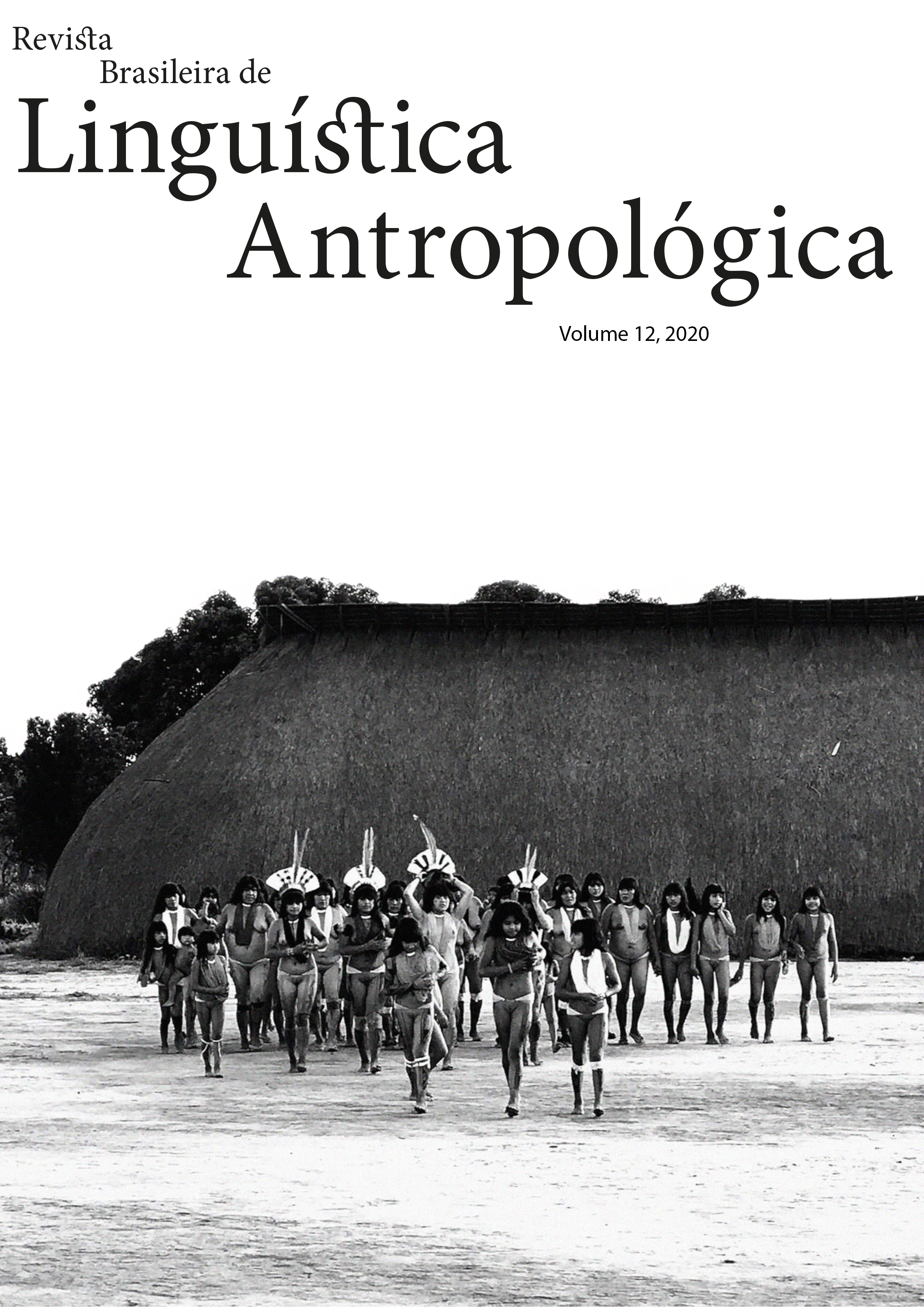Um breve histórico da escrita Mundurukú
DOI:
https://doi.org/10.26512/rbla.v12i1.34083Keywords:
Ortografia; Mundurukú; HistóriaAbstract
This study describes three defining moments on the spelling formation and evolution of the Mundurukú (Tupí) language. The historical path shows that, until recently, the main function of writing in the community was religious education. One of the first texts written in the language was a catechism, produced in early twentieth century, by Frei Hugo Mense, a Franciscan missionary. The constitution of the Mundurukú alphabet only occurred in the 1960s, proposed by SIL missionaries. At this moment, writing turns to mother tongue education, albeit in a secondary way. Shortly afterwards, the alphabet underwent a revision and some graphemes were altered, seeking to achieve a greater similarity with Portuguese letters. The analysis of letter-sound correspondences shows that the function attributed to writing was decisive for the choice of which features of spoken Mundurukú should be represented graphically, and how these choices affected language teaching in local education.
References
BARROS, Maria Cândida Drumond Mendes. 2004. A missão Summer Institute of Linguistics e o indigenismo latino-americano: história de uma aliança (décadas de 1930 a 1970). Revista de Antropologia, vol. 47, n.1. São Paulo, 45-85.
BRAUN, Ilse; CROFTS, Marjorie. 1965. Mundurukú phonology. Anthropological Linguistics, v. 7, n. 7, 23-39.
CABÁ, Amâncio; SAU, Catarina. 1970. Aypapayũ’ũm’ũm ekawéƒn: histórias dos antigos Mundurukú ”“ português. Contado por Amâncio Cabá e Catarina Sau; tradução Apolônia dos Santos; redator Martinho Burum. Brasília: Summer Institute of Linguistics.
COLLEVATTI, Jayne Hunger. 2009. A invenção (franciscana) da cultura Munduruku: sobre a produção escrita dos missionários da Província de Santo Antônio. Revista de Antropologia, São Paulo, USP, 2009, vol. 52, n. 2, 633-676.
CROFTS, 1985. Aspectos da Língua Munduruku. Brasília: Summer Institute of Linguistics.
CROFTS, Marjorie. 1967. Notas sôbre dois dialetos do Mundurukú. Atas do Simpósio sobre a Biota Amazônica, vol. 2 (Antropologia), 85-91.
CROFTS, Marjorie. 1973. Gramática Mundurukú. Brasília: Summer Institute of Linguistics.
CROFTS, Marjorie. 1976. Must tone always be written in a tonal language? The Bible Translator, vol. 27, 127-34.
GÓES NETO, Antônio Fernandes. 2015. O Novo Testamento em nyengatu (1973): um capítulo na história das traduções bíblicas para línguas indígenas. 217 p. Dissertação (Mestrado em Estudos da Tradução), Universidade de São Paulo.
KATZ, L.; FROST, R. 1992. The reading process is different for different orthographies: the orthographic depth hypothesis. In R. Frost & L. Katz (eds.), Orthography, Phonology, Morphology, and Meaning. Amsterdam: Elsevier North Holland Press, 67-84.
KEMPF, Valter. 1944. A contribuição franciscana para o conhecimento da tribo dos Mundurucus. Vozes de Petrópolis, Rio de Janeiro, vol. 2.
MENSE, Frei Hugo (O. F. M.) 1924. Cabi-ä. Pequeno catecismo no idioma mundurucú. Bahia 1924. 56 p. in-8.0 Hugo Mense OFM, Bahia (S. Francisco).
MENSE, Frei Hugo (O. F. M.) 1947. Língua mundurucú: Vocabulários especiais: Vocabulários apalaí, uiabói e maué. Comentários de R. F. Mansur Guérios, Válter Kempf e Aryon Dall'Igna Rodrigues. Arquivos do Museu Paranaense, v. VI, Curitiba: Museu Paranaense, 107-148.
MONSERRAT, Ruth Maria Fonini. 1996. Vocabulário Mundurukú-Português. SEC/PARÁ (Manuscrito).
MONSERRAT, Ruth Maria Fonini. 2000. Dicionário Myky-Português e Vocabulário Munduruku-Português, v. 1, Caxias do Sul: EDUCS.
PICANÇO, Gessiane. 2005. Mundurukú: Phonetics, Phonology, Synchrony, Diachrony. Tese (Doutorado em Linguística). University of British Columbia, Canadá.
PICANÇO, Gessiane. 2012a. Language planning for “Mundurukú do Amazonas”. Revista Brasileira de Linguística Aplicada. Belo Horizonte, v. 12, n. 2, 405-423.
PICANÇO, Gessiane. 2012b. Introdução ao Mundurukú: fonética, fonologia e ortografia. Cadernos de Etnolingüística, Série Monografias, 3.
RICHTER, Thomas; DRUMMEN, Michael. 2020. In 80 Büchern um die Welt: Katalog zur Ausstellung kirchenhistorischer Bestände in der Missionsbibliothek und katholischen Dokumentationsstelle mikado in Aachen. Aachen 2020, S., p. 244-247.
SIL (Summer Institute of Linguistics). 1967. O Evangelho segundo São Marcos na língua mundurukú. Edição experimental, Rio de Janeiro.
Downloads
Published
Issue
Section
License
Copyright (c) 2020 Revista Brasileira de Linguística Antropológica

This work is licensed under a Creative Commons Attribution 4.0 International License.
Authors who publish in RBLA agree to the following terms:
a) Authors maintain the copyright and grant the journal the right of first publication, and the work is simultaneously licensed under the Creative Commons Attribution License, which allows the sharing of the work with recognition of the authorship of the work and initial publication in this journal.
b) Authors are authorized to assume additional contracts separately, for non-exclusive distribution of the version of the work published in this journal (eg, publish in an institutional repository or as a book chapter), with recognition of authorship and initial publication in this journal.
c) Authors are allowed and encouraged to publish their work online (eg, in institutional repositories or on their personal page) at any point before or during the editorial process, as this can generate productive changes, as well as increase impact and citation of the published work.










